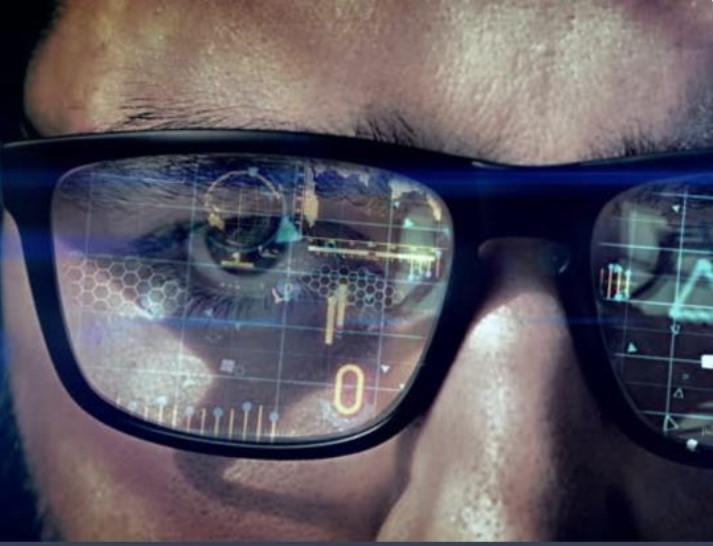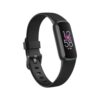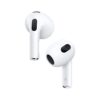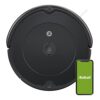Introduction
Wearable technology has swiftly transitioned from a niche innovation to a pervasive element in our daily lives, impacting everything from health and fitness to communication and entertainment. This comprehensive exploration delves deep into the latest advancements, current trends, and future projections, painting a vivid picture of a world increasingly augmented by wearable tech.
The Current State of Wearable Technology
Health and Fitness Trackers: In the realm of health and fitness, trackers have become ubiquitous. Leading brands such as Fitbit, Garmin, and Apple are at the forefront, offering devices that track everything from heart rate and sleep patterns to steps and overall physical activity. The evolution doesn’t stop there; modern trackers are now equipped with features to monitor stress, blood oxygen levels, and even provide ECG readings. This continuous innovation provides a holistic view of individual health, empowering users with data previously accessible only in clinical settings.
Smartwatches: Smartwatches have undergone a remarkable transformation, evolving from mere extensions of the smartphone to independent, powerful devices. The Apple Watch Series 7 and Samsung Galaxy Watch 4 are prime examples of this evolution, boasting LTE connectivity, comprehensive health and fitness tracking, and a wide array of applications. These devices are no longer just accessories; they are integral components of daily life, assisting in everything from task management to health monitoring.
Smart Clothing: An exciting and innovative field, smart clothing merges technology directly with fabric, creating apparel that not only offers comfort and style but also functions as a high-tech instrument. Take, for instance, the Athos line of fitness apparel, which tracks muscle activity, heart rate, and respiratory rate, offering invaluable insights into workout efficiency. Beyond fitness, smart clothing ventures into daily wear with features that adapt to temperature changes, alter color, or even harness energy from the user’s movements, paving the way for a new era of intelligent fashion.

Emerging Trends in Wearable Technology
Augmented Reality (AR) Glasses: Augmented Reality glasses are nearing mainstream adoption, promising to revolutionize our interaction with the world by overlaying digital information onto the physical realm. Projects like Facebook’s (Meta) Project Aria and Apple’s anticipated AR glasses are set to offer functionalities like real-time navigation, facial recognition, and instantaneous translation, promising a future where digital and physical realities coalesce seamlessly.
Wearable Biometrics for Health Monitoring: There’s a growing emphasis on specialized health monitoring wearable devices. Continuous glucose monitoring (CGM) systems are becoming more user-friendly and less invasive. Similarly, new devices are emerging to monitor respiratory conditions, mental health, and even analyze sweat for signs of potential illnesses, marking a shift towards more targeted and diagnostic health technology.
Skin-Integrated Wearable Tech: The frontier of wearable technology is witnessing the development of ultra-thin, skin-like circuits that adhere to the body, functioning like a second skin. These devices can monitor an array of health indicators such as heart rate, temperature, and even brain activity. Their discreet nature and high precision offer a glimpse into a future where health monitoring is continuous, non-invasive, and seamlessly integrated into our daily lives.
Future Prospects: What’s Next for Wearables?
Increased Personalization: The future of wearable technology lies in personalization. Imagine devices that not only track and interpret data but also learn from your behavior to provide tailored advice and insights. Wearables will adapt in real-time, offering custom health recommendations, adjusting to your activity levels, and even anticipating needs based on your daily routine.
Better Integration and Interoperability: As the Internet of Things (IoT) expands, wearables will become more interconnected with other devices and systems. This will lead to a more cohesive ecosystem where your wearable communicates effortlessly with your smartphone, home automation systems, and vehicles, fostering a more connected and efficient lifestyle.
Sustainability and Ethical Considerations: With increasing awareness around sustainability and ethics, the future of wearables will also focus on responsible production and usage. Expect to see a surge in devices made from recycled materials, designed for longevity and repairability, alongside a heightened emphasis on fair labor practices and ethical manufacturing.
My Personal Insights and Reflections on the Future of Wearable Technology
As an enthusiast and observer of the rapid evolution in wearable technology, I find the trajectory of its development both exhilarating and laden with responsibility. Here are some personal insights and reflections on the future of this fascinating field:
The Potential for Empowerment: Wearable technology, at its core, has the potential to significantly empower individuals. By providing real-time data about our health, environment, and daily activities, these devices can lead to more informed decisions and a greater sense of control over our lives. I’m particularly excited about the potential for wearables to democratize health monitoring, giving individuals insights typically reserved for medical professionals.
Concerns Over Data Privacy and Security: With great power comes great responsibility. The increasing sophistication of wearables brings about serious concerns regarding data privacy and security. As these devices collect and store vast amounts of personal data, the potential for misuse is a significant concern. It’s imperative for industry leaders and regulators to prioritize robust security measures and transparent data policies to protect users.
The Need for Inclusivity and Accessibility: As wearable technology becomes more integral to daily life, it’s crucial that it serves a diverse user base. This means designing devices that are accessible to people of all ages, abilities, and economic backgrounds. I hope to see continued innovation in making wearables more inclusive, ensuring that the benefits of this technology are available to everyone, not just a privileged few.
Balancing Innovation with Sustainability: The rapid pace of technological advancement often comes at an environmental cost. As we celebrate each new breakthrough in wearable tech, it’s also essential to consider the environmental impact of these devices. From production to disposal, the lifecycle of wearables should be approached with sustainability in mind. I believe that future success in this industry will increasingly depend on finding that balance between innovation and environmental responsibility.
The Importance of Ethical Considerations: Finally, as wearable technology becomes more integrated into our lives, ethical considerations become increasingly important. Issues such as consent, data ownership, and the potential for technology to exacerbate social inequalities must be addressed. As a society, we need to have ongoing conversations about how we want to integrate these technologies into our lives and the values we want them to uphold.
In conclusion, the path of wearable technology is fraught with challenges and opportunities. Its potential to enhance our lives is immense, but so is the responsibility to ensure it does so in a way that is secure, inclusive, ethical, and sustainable. As we stand on the brink of what might be a new era in personal technology, it’s our collective responsibility to steer this course thoughtfully and deliberately, ensuring that the future of wearables is as bright and beneficial as it promises to be.
Conclusion
Wearable technology is not just evolving; it’s revolutionizing our approach to health, communication, and daily life. As we continue to innovate and expand the capabilities of these devices, the potential for improving health outcomes, enhancing productivity, and fostering connections is boundless. Yet, as we advance, it’s imperative that we navigate this path responsibly, ensuring that wearable technology serves to enhance lives in a manner that’s equitable, sustainable, and respectful of privacy. The journey ahead for wearable tech is as exciting as it is challenging, promising a future that’s both high-tech and human-centric.





